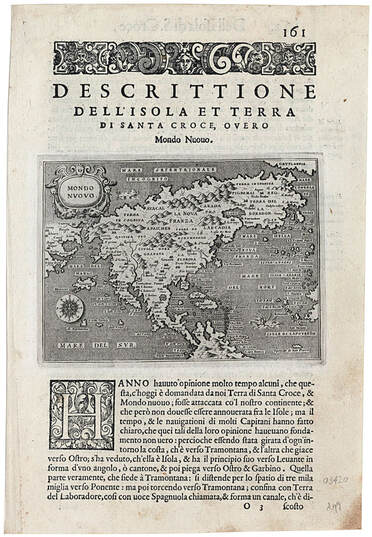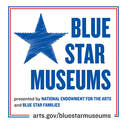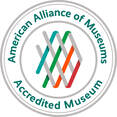Tomaso Porcacchi
Mondo Nuovo
Venice 1576
Mondo Nuovo
Venice 1576
This finely engraved, rather small map appeared in one of the most famous compendiums of maps of the world known as isolarios in which all the continents are depicted as islands. It is a reduced version of the map that Paolo Forlani published in Venice in 1565, the second known map to depict the Strait of Anian seperating America and Asia. The first, Gastaldi's world map (c. 1561), survives in only one example. The Forlani map is also the first to show Quivira Pro (meaning Quivira Province) in the nortwestern quadrant of North America. This map by Porcacchi is the second. Again, the Asian and American continents are shown separated by a strait of water, labeled the Strait of Anian. The first European actually to see this strait was Vitus Bering in 1741.
The interior of the southwestern portion of the continent and the general outline of the west coast of North America reflect discoveries from Coronado's expedition of 1540-1542 and Cabrillo's voyage of 1542-1544 up the west coast perhaps as far as Pont Arena, which he named Cabo de Fortunas. (2) Note that Baja California is accurately displayed as a peninsula and existence of a northwest passage is clearly delineated.
(2) Henry R. Wagner, Juan Rodriguez Cabrillo, Discoverer of the Coast of California (San Francisco: California Historical Society, 1941), 90.
NEXT MAP
PREVIOUS MAP
The interior of the southwestern portion of the continent and the general outline of the west coast of North America reflect discoveries from Coronado's expedition of 1540-1542 and Cabrillo's voyage of 1542-1544 up the west coast perhaps as far as Pont Arena, which he named Cabo de Fortunas. (2) Note that Baja California is accurately displayed as a peninsula and existence of a northwest passage is clearly delineated.
(2) Henry R. Wagner, Juan Rodriguez Cabrillo, Discoverer of the Coast of California (San Francisco: California Historical Society, 1941), 90.
NEXT MAP
PREVIOUS MAP






